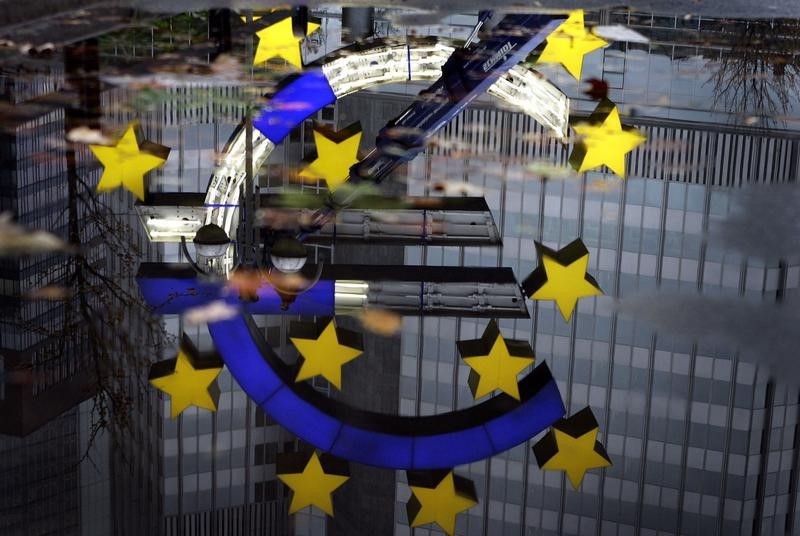Investing.com - The Eurozone economy ended the first quarter on a low note as the two largest manufacturing sectors in the region contracted in March.
A preliminary reading for manufacturing activity in the euro zone fell to its lowest level since 2013, and the worst is probably still to come, IHS Markit said in surveys published on Friday.
“Forward-looking indicators such as business optimism and backlogs of work suggest that growth could be even weaker in the second quarter," said IHS economist Chris Williamson. "Worryingly, with order book backlogs shrinking at the steepest rate since late-2014, more and more companies are pulling back on hiring, and likely reviewing their investment spending."
The news shook European stock and bond markets, and pushed the eurobelow $1.13 for the first time in 10 days. The Euro Stoxx 600 fell 0.5% to its lowest in a week, while the yield on the benchmark 10-year German government bond fell briefly below 0% for the first time since the autumn of 2016. It was at 0.00% by 05:30 AM ET (09:30 GMT)
The surveys suggest that the downturn in the Eurozone economy could be deeper and longer than feared, and cast doubt over whether the European Central Bank's recent announcement of new long-term loans for banks would be enough to turn the situation around.
"The ECB is unlikely to hit the panic button based on these data, even if the numbers will add to downside risks," said Nordea Markets' Jan van Gerich in a blog post. He pointed to the consolation that services had held up better than the manufacturing sector during the month. All the same, he said, "If the outlook continues to weaken, the ECB will need to do much more" than provide new two-year loans to banks.
At its last policy meeting on March 7, the European Central Bank pushed back its timeline for raising interest rates and announced a new round of low-cost funding to banks, known as TLTROs. It acknowledged that the downside risks to the economy had clearly risen on a combination of concerns ranging from new vehicle licensing rules in Germany to Brexit and the U.S.-trade war. Of those factors, only the first can confidently be said to have been largely resolved.
Markit said that its flash euro zone manufacturing PMI fell to 47.6 from 49.3 in January, its lowest since May 2013. Analysts had expected a reading of 49.5.
The Eurozone Composite Output Index, which measures the combined output of both the manufacturing and service sectors, fell to 51.3 this month, from 51.9 in February. That's because the services index only fell to 52.7 from 52.8 in February, in line with expectations.
An index reading above 50.0 notionally indicates expansion, while one below it indicates contraction.
